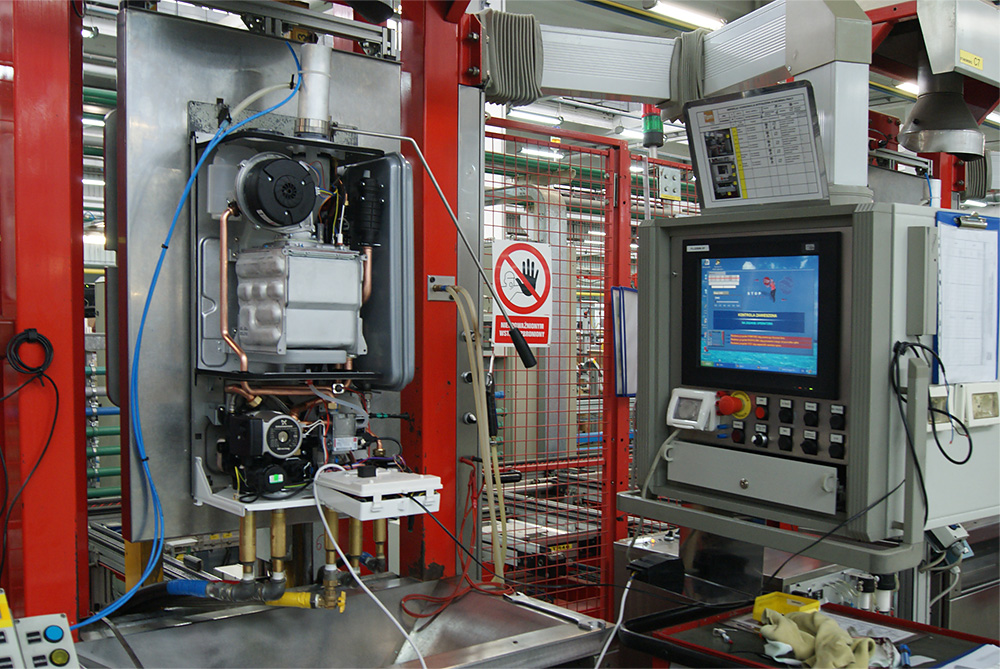TESTING, QUALITY
High standards of quality and reliability are vital in the development and manufacture of today’s high efficiency boilers for commercial and domestic applications. Alister Maclachlan, Product Director at Vokèra by Riello, looks at the five key stages of quality testing in the journey from product concept through to market launch and beyond.
1. Research and development
Technology is constantly innovating and evolving all around us and the heating industry is no exception. As a result of significant investment in research and development by manufacturers, modern gas boilers are more reliable than they’ve ever been. Now accounting for around 80% of the domestic boiler market the combination boiler, for example, has come a long way since it was first launched in the UK over 30 years ago. The perceived vulnerabilities in earlier generations of this popular appliance were addressed through intense quality testing of individual components and overall design. And it is this commitment to optimum quality and reliability that has given manufacturers the confidence to offer much longer warranties on their products, which is great news for installers and their customers. For example, a free 10-year warranty is now available on selected Vokèra boilers installed with our BeSMART Wi-Fi enabled thermostat. This is a major advance in the boiler market, particularly when you think that the average life expectancy of a traditional gas boiler was generally considered to be between 12 and 15 years, subject to the appliance being well maintained and serviced annually.
2. Accelerated life testing
Introducing the innovation and style the market demands, without compromising quality and reliability, can be a challenge for boiler manufacturers. Needless to say, the solution to this comes back to testing and more testing. Every component is thoroughly tested under laboratory conditions before it can be considered for use in one of Vokèra’s new products or as an upgrade to an existing appliance. Typically, components will undergo MTBF (Mean Time Between Failures) testing and accelerated life testing. MTBF is a method of testing large quantities of components for a specific period, let’s say 100 components for 1,000 hours, in order to calculate the failure rate over a longer period, for example, 1 million hours. Only when these tests have been completed to the R&D team’s satisfaction can a product progress to the next stage – extensive field trials. These trials are designed to see how the appliance performs in real-life conditions. Ideally, field trial boilers should be installed where they will be subjected to normal or even adverse operating conditions. Only when these trials have proved successful can the move to mass production be considered.
3. Batch testing
During assembly, further inspections are conducted and settings such as combustion readings are checked. After assembly each appliance is subjected to what is generally referred to as the ‘final test’. At Vokèra we also undertake batch testing at this stage, which means taking 2% of these appliances for stringent retesting lasting around two hours per appliance. An additional 0.5% of all appliances are then selected for further rigorous testing in our laboratory which takes a minimum of 12 hours per appliance. This ‘drill down’ quality test ensures that our ‘final test’ procedure is reliable and also acts as an early warning of any potential component batch issue.
This intense level of testing helps to ensure that ‘out-of-the-box’ reliability is consistently high. And we believe it is important to continue component testing to maintain, or even improve, product reliability in the field, particularly in the light of today’s longer warranties. Reporting systems enable our engineers to fast track any quality issue they encounter directly to the quality department via their PDA in real time. If required, corrective action can then be carried out quickly, minimising any potential impact or inconvenience to customers.
4. Lifetime reliability
Feedback from the field is invaluable for monitoring the inherent quality and reliability of products and individual components not only during an appliance’s warranty period but also throughout its lifetime. The Weibull or ‘bathtub’ curve is an established engineering model for plotting component reliability during a three-part timeline. This starts with a decreasing failure rate known as “early failures’, through to the relatively low failure rate of “normal or useful lifetime”, and thirdly the increasing failure rate at the “end-of-life” phase. Together, these three segments look like a bathtub with two steep edges and a flat bottom – hence the name. Indeed, we have used this model to identify key areas where action can be taken to extend product reliability periods.
5. Improvement strategies
Many modern manufacturing environments have adopted recognised techniques and tools to improve quality and productivity in all areas of the production process. Among these is Kaizen, a Japanese concept meaning ‘improvement’, which we have deployed in our state-of-the-art manufacturing facilities. Kaizen involves employees at all levels working together proactively to achieve regular, incremental improvements to the manufacturing process. It embodies positive strategies for productivity improvement, total quality culture and zero defects. The widely used ‘Just In Time’ practice is part of Kaizen and is proven to bring benefits to all types of process including shortened lead times and reduced inventory. In addition to Kaizen, Vokèra uses Six Sigma – first developed at Motorola in the 1980s as a method to improve process quality and reduce variability – the enemy in every aspect of business. By decreasing process variation companies can achieve defect reduction which, in turn, will lead to improvements in product quality, customer satisfaction, profits and employee morale.
When an appliance leaves the factory we don’t know who will install it, where it will be sited, or to what type of heating system it will be connected. With so many unknowns and variables, a commitment to upholding the quality and reliability of each and every product is paramount. Extensive testing before an appliance gets to market, and continuous performance monitoring when it does, helps to ensure a successful, and most importantly, safe installation every time.



